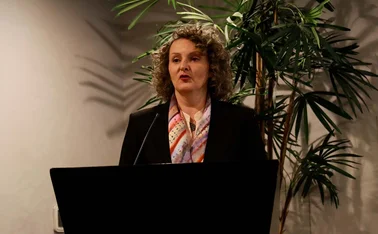
Reserve managers ‘unprepared’ for home trading
Covid-19 presented reserve managers with unprecedented business continuity challenges

March 2020 represented a ‘perfect storm’ stress test for many reserve managers. It was a time when the stewards of $12 trillion in FX reserves were forced to act swiftly to maintain confidence in markets that were suffering acute volatility, as portfolio flows whipsawed out of previously popular investment. Yet the operational challenges – human and technological – brought about by Covid-19 lockdowns meant many reserve managers struggled to fulfil their roles.
“Due to the unprecedented nature of the current crisis, reserve managers worldwide are requesting guidance… [on] how to address business continuity challenges,” Marco Ruiz, engagement manager for the Reserves Advisory & Management Parternship (RAMP) at the World Bank Treasury, told participants in a Central Banking audio seminar, Reserve management responses to Covid-19. “By and large, what we saw is that central banks were not prepared for this type of event.”
The World Bank official, whose team works with more than 70 central banks, said although central banks are conservative in nature and have extensive business continuity processes, these are mostly designed for natural disasters or short-term technology outages. “Few had actually thought of this scenario: having your whole staff working from home,” Ruiz said.
Enormous workload on staff
Bank of Israel deputy governor Andrew Abir added that business continuity plans tended to be designed for a short period of time, when the amount of trading activity would be assumed to be lower than usual. As a result, central banks have tended to build their systems around these parameters of time and intensity. But the Covid-19 pandemic created a new reality.
“We faced the opposite scenario,” said Abir, who previously ran the Israeli central bank’s markets department. “What we actually found was that this period has gone on way longer than what we’d initially envisaged, and the amount of activity we did in the department as we rolled out various programmes in the markets meant our actual turnover was almost double or three times what we do in regular periods, and yet we had only half the number of people.”
Bank of Israel’s markets department not only manages more than $130 billion in FX reserves, it is also responsible for various monetary policy programmes. “Additionally, we had to put in different types of programmes that we hadn’t done before, and we had to get them into the systems. The workload on people was enormous, [for] the people who were actually left doing the work.”
Lack of technology
The lack of personnel was often the result of the imposition of team rotations to mitigate the likelihood of a whole team contracting the coronavirus at the same time. It also reflected another shortage: a lack of technology access.
Ruiz said most central banks had to improvise to make sure technology could allow their employees to work from home. Even with this concerted effort, some were still unable to carry out remote operations away from physical locations.
“One example is that they’re not able to connect to their systems. For institutions operating Swift, this needs to be operated from the office despite the lockdown,” said Ruiz.
There was actually a shortage of laptops in the country, so we were scrambling around trying to buy laptops
Andrew Abir, Bank of Israel
Another factor complicating matters was that in many institutions, employees had to work using their own personal devices, many of which were not sufficiently powerful to run trading and risk management programmes.
“Sometimes, they don’t have the best technology at home, because it was no longer useful to have a very powerful laptop at home,” said Ruiz. “These factors had not been foreseen, and will need to be included in their business continuity plans, because that’s an area where there can be a lot of improvement.”
The Bank of Israel was not able to allow all its personnel to work from home due to similar challenges. Israel implemented a lockdown in March, and, early on during the pandemic, the central bank had people working both in its main site and its back-up location, so separating employees while maintaining social distancing. Some other members of the staff started working from home.
“Our main problem was finding enough laptops for people to work from home, because people didn’t have enough laptops that were powerful enough or set up to work with our systems,” said Abir. “There was actually a shortage of laptops in the country, so we were scrambling around trying to buy laptops.”
Trading inefficiencies
Giorgi Laliashvili, head of financial markets at the National Bank of Georgia, said the focus of his department during March was on securing liquidity. As 90% of Georgia’s reserves are invested in triple A-rated assets, the central bank benchmarks are government bond indexes, and as Georgia has access to International Monetary fund money, the central bank was “well prepared” for the market stresses. But, as the market stress “coincided with a period when we all were moving to work from home”, Laliashvilli said it “created discomfort”.
Some of the issues at first sign appear relatively minor. “For instance, traders having just one monitor for their notebook at home, instead of four in the office,” he said. But the challenges of working from home were reinforced by similar problems being experienced by private-sector counterparties.
“We needed to mobilise liquidity at a time when it was lacking in most international markets,” said Laliashvili. But simultaneously, “traders in major financial centres were also moving to remote work”, and “this created additional disruptions”. “Efficiency at trading desks was affected,” he added.
Webinar’s Index
00:00 Introduction
03:45 Main features of Covid-19 market turmoil
10:35 Individual experiences during the crisis
13:30 Inefficiencies caused by teleworking
19:20 A test for new assets; equities, corporate bonds
26:20 Lack of preparedness to manage reserves from home
29:30 Difficulties accessing enough laptops to operate remotely
37:20 Impact of expanded central bank asset purchases on markets
45:05 Challenges in rebalancing a diversified portfolio
50:00 Has diversification worked as expected?
53:50 Future review of strategic asset allocations
To hear the full podcast, listen in the player above, or download. Future podcasts in our CB On Air series will be uploaded to centralbanking.com. CB On Air is also available via iTunes or podcast apps and from Google Podcasts (Android only).
The audio seminars How to prepare for a seismic shift in climate-related investment and Navigating the impact of new climate policies are also available on demand.
Only users who have a paid subscription or are part of a corporate subscription are able to print or copy content.
To access these options, along with all other subscription benefits, please contact info@centralbanking.com or view our subscription options here: http://subscriptions.centralbanking.com/subscribe
You are currently unable to print this content. Please contact info@centralbanking.com to find out more.
You are currently unable to copy this content. Please contact info@centralbanking.com to find out more.
Copyright Infopro Digital Limited. All rights reserved.
As outlined in our terms and conditions, https://www.infopro-digital.com/terms-and-conditions/subscriptions/ (point 2.4), printing is limited to a single copy.
If you would like to purchase additional rights please email info@centralbanking.com
Copyright Infopro Digital Limited. All rights reserved.
You may share this content using our article tools. As outlined in our terms and conditions, https://www.infopro-digital.com/terms-and-conditions/subscriptions/ (clause 2.4), an Authorised User may only make one copy of the materials for their own personal use. You must also comply with the restrictions in clause 2.5.
If you would like to purchase additional rights please email info@centralbanking.com








